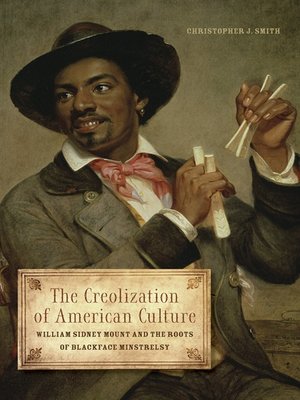The Creolization of American Culture
ebook ∣ William Sidney Mount and the Roots of Blackface Minstrelsy · Music in American Life
By Christopher J Smith

Sign up to save your library
With an OverDrive account, you can save your favorite libraries for at-a-glance information about availability. Find out more about OverDrive accounts.
Find this title in Libby, the library reading app by OverDrive.



Search for a digital library with this title
Title found at these libraries:
| Library Name | Distance |
|---|---|
| Loading... |
The Creolization of American Culture examines the artworks, letters, sketchbooks, music collection, and biography of the painter William Sidney Mount (1807–1868) as a lens through which to see the multiethnic antebellum world that gave birth to blackface minstrelsy. As a young man living in the multiethnic working-class community of New York's Lower East Side, Mount took part in the black-white musical interchange his paintings depict. An avid musician and tune collector as well as an artist, he was the among the first to depict vernacular fiddlers, banjo players, and dancers precisely and sympathetically. His close observations and meticulous renderings provide rich evidence of performance techniques and class-inflected paths of musical apprenticeship that connected white and black practitioners. Looking closely at the bodies and instruments Mount depicts in his paintings as well as other ephemera, Christopher J. Smith traces the performance practices of African American and Anglo-European music-and-dance traditions while recovering the sounds of that world. Further, Smith uses Mount's depictions of black and white music-making to open up fresh perspectives on cross-ethnic cultural transference in Northern and urban contexts, showing how rivers, waterfronts, and other sites of interracial interaction shaped musical practices by transporting musical culture from the South to the North and back. The "Africanization" of Anglo-Celtic tunes created minstrelsy's musical "creole synthesis," a body of melodic and rhythmic vocabularies, repertoires, tunes, and musical techniques that became the foundation of American popular music. Reading Mount's renderings of black and white musicians against a background of historical sites and practices of cross-racial interaction, Smith offers a sophisticated interrogation and reinterpretation of minstrelsy, significantly broadening historical views of black-white musical exchange.|
Cover
Title Page
Copyright Page
Contents
Preface
Acknowledgments
1. Recovering the Creole Synthesis
2. The Creole Synthesis in the New World
3. Long Island and the Lower East Side
4. Minstrelsy's Material Culture
5. Melody's Polyrhythmic Polysemic Possibilities
6. Akimbo Culture
Conclusion: The Creole Synthesis in American Culture
Appendix: Blackface Scholarship
Notes
Index
|
Irving Lowens Book Award, Society for American Music (SAM), 2015.
— Society for American Music (SAM)
| Christopher J. Smith is an associate professor and chair of musicology/ethnomusicology and the director of the Vernacular Music Center at the Texas Tech University School of Music. A working musician, he also performs, records, and tours internationally with the medieval music ensemble Altramar and other bands specializing in Irish traditional music and pre-World War II blues and jazz.
| Christopher J. Smith is an associate professor and chair of musicology/ethnomusicology and the director of the Vernacular Music Center at the Texas Tech University School of Music. A working musician, he also performs, records, and tours internationally with the medieval music ensemble Altramar and other bands specializing in Irish traditional music and pre-World War II blues and jazz.







